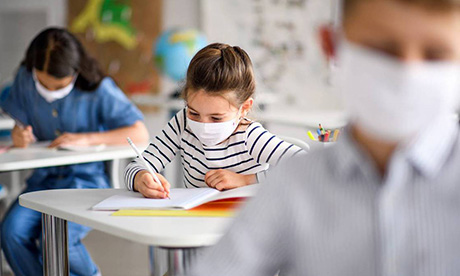While the political debate on masks may never be settled, a large new study this week further solidifies the story from the realm of science:
People who wear face coverings are less likely to spread COVID-19.
Cases of in-school transmission were 72% lower in districts with mandatory masking during the late summer and fall of 2021, compared to those where masks were optional, the study authors reported in Pediatrics.
Researchers tracked cases in nine states for nearly five months — from the end of July through mid-December, when the delta variant was dominant.
The findings were posted online Wednesday, the same day the Philadelphia school system lifted its mask mandate for students and teachers.
Yet masks are still required on planes and public transit until at least April 18, the Transportation Security Administration announced Thursday.
For the study, researchers tracked cases among more than 1.1 million students and 157,000 staff in North Carolina, Wisconsin, Missouri, California, Washington, Georgia, Tennessee, Kansas, and Texas.
The authors found that for every 100 cases of COVID acquired outside the school in a given community, districts where masks were optional saw 26.4 cases of in-school transmission compared with 7.3 cases in districts where masks were required — that is, 72% fewer cases of in-school transmission.
Put another way, that works out to 3.6 times as many infections acquired in schools where masks were not required, compared to those where mandates were in place.
The authors cautioned that they could not prove that masks were entirely responsible for the lower rates of transmission, as the school districts were not chosen at random for implementation of mandates.
Other precautions or demographic characteristics may have played a role in limiting infection, according to the study led by researchers from Duke University School of Medicine.
Yet the findings are consistent with other large studies suggesting that face coverings do indeed reduce the risk of spread.
It’s no secret that reported case numbers rose sharply after the period covered in the study, due to the omicron variant, then plunged yet again. Continue reading
Additional readingNews category: Analysis and Comment.




